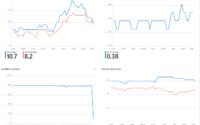Start using OneDrive as a RemoteApp in Azure Virtual Desktop
Microsoft has announced support for configuring OneDrive as AVD RemoteApp, marking a significant enhancement. With this latest development, users can seamlessly access and synchronize their OneDrive files within a remote app environment.
OneDrive stands out as a robust and user-friendly cloud storage service suitable for a diverse range of users, from small businesses to large enterprises. It offers advanced business features across all subscription tiers, empowering organizations to tailor OneDrive to their specific needs and preferences.
Previously, OneDrive functionality was limited on Azure Virtual Desktop, requiring specific desktop settings and lacking compatibility with RemoteApps. However, with this recent update, users can now integrate Microsoft OneDrive seamlessly with RemoteApps in Azure Virtual Desktop environments.
Users can seamlessly access their files and ensure synchronization while utilizing a remote application. Upon initiating a RemoteApp session, OneDrive conveniently launches alongside, operating in tandem. This integration functions akin to the standard OneDrive experience on your device, ensuring simplicity and familiarity for users.
What is OneDrive?
OneDrive is a user-friendly cloud storage platform designed to cater to businesses of all sizes. It provides advanced features tailored for enterprises, which are available across all subscription types. This enables organizations to fully leverage the benefits of OneDrive based on their specific requirements.
What is the New Support for OneDrive on Azure Virtual Desktop?
The recent update introduces support for integrating Microsoft OneDrive with RemoteApps in Azure Virtual Desktop. This enhancement allows users to seamlessly access and synchronize their files while using a remote app. Upon connecting to a remote app, OneDrive automatically launches alongside it, improving usability.
Configuring OneDrive as AVD RemoteApp is supported now.
Now, it’s possible to configure OneDrive as an AVD RemoteApp, facilitating Microsoft OneDrive integration with RemoteApps in Azure Virtual Desktop. This integration empowers users to effortlessly access, synchronize, and share their files through an interface directly within the Azure Virtual Desktop environment.
End User Experience
- Once configured, when a user launches a RemoteApp, the OneDrive icon is integrated into the taskbar of their local Windows device. If a user launches another RemoteApp from the same host pool on the same session host, the same instance of OneDrive is utilized, and another instance doesn’t initiate.
- If your session hosts are joined to Microsoft Enterprise ID, you can silently configure user accounts so that users are automatically signed in to OneDrive and begin synchronizing straight away. Otherwise, users will need to sign in to OneDrive upon first use.
- The icon for the instance of OneDrive accompanying the RemoteApp in the system tray appears identical to when OneDrive is installed on a local device. You can differentiate the OneDrive icon from the remote session by hovering over the icon, where the tooltip includes the word “Remote.”
- When a user closes or disconnects from the last RemoteApp they’re using on the session host, OneDrive exits within a few minutes, unless the user has the OneDrive Action Center window open.
Prerequisites for OneDrive with RemoteApp in Azure Virtual Desktop
You will require a pooled host pool set up as a validation environment.
The session hosts in the host pool should meet the following criteria:
- Run Windows 11 Insider Preview Enterprise multi-session, version 22H2, build 25905 or a more recent version
- To acquire an Insider Preview created for multi-session, you should begin with a non-insider build.
- Then, join the session hosts to the Windows Insider Program and proceed to install the preview build.
- Please note that Intune does not support update rings with multi-session environments.
- Ensure that the most up-to-date version of FSLogix is installed on the session hosts.
How to Set Up OneDrive to Launch with a RemoteApp
- Download and Install the Latest Version of the OneDrive Sync App
Automatic Sign-In with Microsoft Enterprise ID
- If your session hosts are connected to Microsoft Enterprise ID, you can set up user accounts for OneDrive so that they automatically sign in. This means users don’t need to log in to OneDrive each time manually. It makes things more convenient for everyone.
On your session hosts, set the following registry value:
Key: HKLM\Software\Microsoft\Windows\CurrentVersion\Run
Type: REG_SZ
Name: OneDrive
Data: “C:\Program Files\Microsoft OneDrive\OneDrive.exe” /background
You can configure the registry using an enterprise deployment tool such as Intune, Configuration Manager, or Group Policy.
PowerShell Method to setup the registry key
To set this registry value using PowerShell, open PowerShell as an administrator and run the following command:
New-ItemProperty -Path “HKLM:\SOFTWARE\Microsoft\Windows\CurrentVersion\Run” -Name OneDrive -PropertyType String -Value ‘”C:\Program Files\Microsoft OneDrive\OneDrive.exe” /background’ -Force
Steps to test OneDrive with a RemoteApp
- Connect to a RemoteApp from the designated host pool and verify the presence of the OneDrive icon on the taskbar of your local Windows device.
- Confirm OneDrive’s file synchronization by accessing the OneDrive Action Center. If not automatically logged in, sign in to your OneDrive account.
- Within the RemoteApp environment, ensure accessibility to your files stored on OneDrive.
- Subsequently, close RemoteApp and any additional applications associated with the same session host. Within a few minutes, OneDrive should exit accordingly.
Here are enhanced recommendations for optimizing OneDrive usage within an Azure Virtual Desktop RemoteApp environment:
- Restrict OneDrive syncing to specific organizations exclusively.
- Implement OneDrive Files On-Demand feature.
- Seamlessly relocate Windows known folders to OneDrive without user intervention.
- Automatically authenticate users into the OneDrive sync application using their Windows credentials.
For further guidance on configuring these settings, please refer to the OneDrive administrative template documentation. You can explore managing OneDrive through Group Policy or leveraging administrative templates within Intune for streamlined administration.
That’s all for today, hope you will have a great day ahead.


